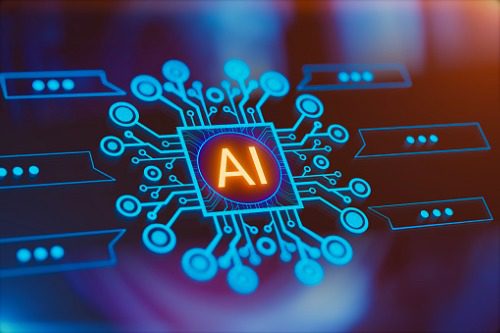How AI can protect businesses from cyber attacks

The cyber risk landscape is ever changing. At one end criminals are dynamically adapting to new opportunities and sophisticated methods of attack. At the other, criminals with less technical skill can launch attacks by using pre-developed fraud and ransomware tools.
To counterbalance this, the fightback against cyber attacks has ramped up, taking advantage of the availability of new tools such as AI (artificial intelligence).
At a Glance – In this article…
Discover why cyber crime needs to be on all businesses’ radarsLearn how AI can be an ally for companies in the fight against cyber threatsSee how you could put AI to use for your business
£27bn: Estimated cost of cybercrime in the UK
Why should this be on my radar?
Many small and medium-sized businesses think they are not on the radar of cyber criminals. They imagine that it’s just large businesses that are targeted. The risk of cybercrime and data breaches for UK companies remains high, in fact, on a global scale UK companies are at the highest risk of material cyberattack according to 84 % 2 of Chief Information Security Officers of UK businesses. The proportion of businesses affected is much higher for medium businesses (59%) and large businesses (69%)3. But this means around a third of smaller businesses are at risk.
So how are the latest developments in AI being used to protect organisations and help them fight back? AI’s ability to learn and adapt can be a very useful tool in helping detect and contain cyber attacks. Let’s look at a few of the ways AI can help…
1. Monitoring and spotting anomalies
AI can sift and sort through vast amounts of data to identify normal behaviour and pick up on things which don’t fit usual patterns. AI can, for example, spot abnormal or unusual behaviour and potential threats from anyone accessing the system, data or sensitive information. It can also notice transactions that are out of the ordinary.
2. Supporting secure authentication
AI can help detect whether logins are genuine or not. AI tools, such as biometric recognition, facial recognition, and fingerprint scanners are already being used to enable organisations to automatically detect whether an attempt to log in to a service is genuine. CAPTCHA and similar tools can help assess whether a human is attempting to log in. AI can also help recognise and prevent brute force attacks where hundreds or thousands of attempts are made to guess passwords.
3. Automating security processes
AI can be used as a filter to analyse files and software code to seek potential threats. It can be trained to recognise the patterns and characteristics of known malware and spot it quickly and raise the alarm.
Automation therefore can be used to alert security teams instantly to issues which can help speed up the process of dealing with attempted breaches and threats. This can minimise costs and damage.
Using AI can be especially helpful when information and data are stored and moved across clouds, databases, apps and internal systems. It can be hard for internal teams to monitor and assess risks, whereas AI can do this automatically. Processes can be quickly and automatically shut down before malicious code causes widespread damage.
4. Reducing or removing human error on monotonous tasks
While opening email isn’t necessarily monotonous it can be rote with people often paying insufficient attention to what they’re clicking. Systems can be configured to help prevent phishing attacks in emails by spotting email spoofing where a similar but slightly different email address is used to try to fool staff. It can even learn the communication habits of staff such as the style of writers and their typical behaviour. This can help it spot spear fishing attacks with emails that pretend to come from a boss, but don’t. If emails are diverted before they even reach a recipient this is a huge threat removal. Human error is often the cause of a breach.
Some cybersecurity tasks are repetitive by their very nature. This means that there is a possibility that something could slip through. AI doesn’t get bored or tired making this more unlikely. With AI doing the routine tasks, it frees up teams to spend time on the things that they do better – complex tasks and strategy for example.
5. Dealing with multiple threats simultaneously
Humans work most efficiently while dealing with one task at a time. On the other hand AI can help scan for multiple threats on multiple platforms, all at the same time. It can look at the network as a whole rather than focus on pieces of it one at a time.
6. Evening up the fight
It’s not just companies that are using AI – the hackers are too. They are using it to make their malicious schemes more undetectable and more automatic. Using AI to fight back adds more tools to your armoury.
What action should I take?
AI is still a relatively unknown technology and can seem intimidating. However, its uses in cyber security are well worth exploring, even for smaller businesses, if you’re concerned about rising cyber threats. Speak to your IT team and consider the specific risks your organisation faces to help determine which areas are worth further research and potential testing.
Speak to your broker about getting the right cyber cover for your business.
Authored by NIG





